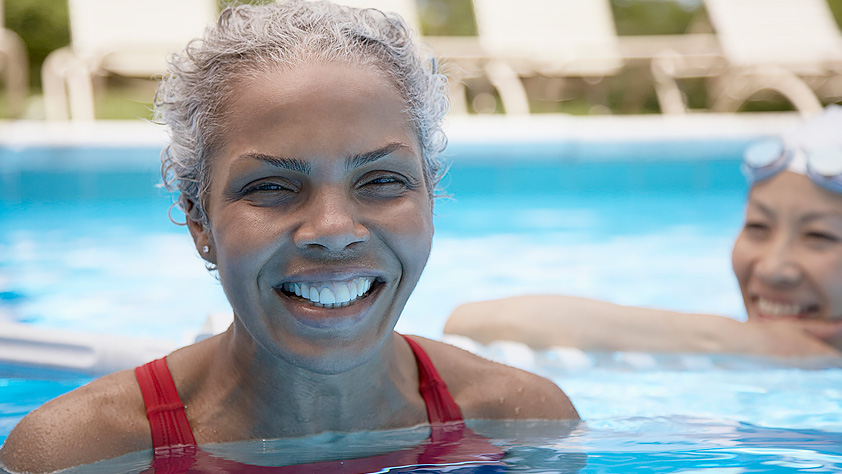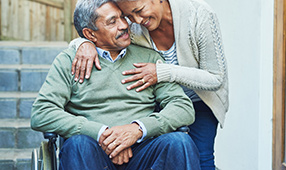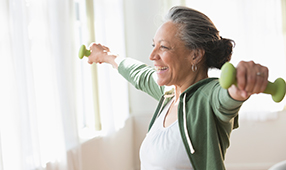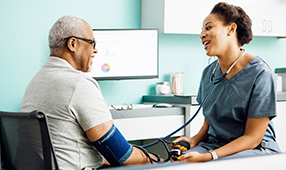While the physical benefits of exercise are well established, few people realize the benefits exercise has for the mind. In addition to a healthier heart, stronger bones and better balance, exercise can boost mood, relieve stress and help manage symptoms of illness and pain.
“It’s quite impressive the litany of activities that seem to affect the health of older adults,” says Thomas Prohaska, Ph.D., Dean of the College of Health and Human Services at George Mason University in Virginia. Among its greatest assets: Studies dating back to 2006 show that regular exercise reduces the risk of disability. And let’s face it, being physically restricted is emotionally disabling!
From swimming to yoga to going for a neighborhood stroll, here are just a few brain-boosting benefits of staying physically active:
Improves quality of life. Exercise does more than just add years to your life. It also adds life to your years. Studies show engaging in regular physical activity can help seniors maintain their independence for longer and manage their daily activities. It also gives people a sense of confidence and self-efficacy. “Engaging in physical activity helps seniors feel more competent,” says Prohaska. You feel sharper, more energetic and have a greater sense of well-being.
Promotes restful sleep. As we get older hormones, medications and a restless mind converge making quality sleep increasingly difficult to achieve. And while any form of exercise promotes restful slumber, according to Richard Dupee, M.D., chief of the geriatrics service at Tufts Medical Center, yoga is particularly effective. In one study, Harvard researchers discovered that daily yoga practice dramatically improved sleep quality and quantity during the 8-week study period.
Keeps depression at bay. Exercise releases a flood of feel-good endorphins that enhance mood and well-being. If you’re approaching your golden years, exercise can even give you drive and energy. In fact, being active has even been linked to staving off feelings of sadness, depression and anxiety.
Boosts brainpower. Exercise increases blood flow to every organ in the body, including your noggin! In fact, studies suggest that being active can improve your ability to think clearly, multi-task and plan ahead, particularly if you choose an activity that requires thinking. Whether you’re playing tennis, dancing, or practicing yoga or tai chi, you have to think to participate, and that builds brain plasticity (which primes your neurons to take on greater cognitive challenges).
Getting active may feel awkward or difficult at first, but the more you practice the more you’ll enjoy it. You may even start to look forward to your workouts, especially if you switch things up.
“When you incorporate four types of exercise into your regimen—balance, flexibility, aerobic and resistance—you’ll not only increase your chances of maintaining your independence into your golden years, but also improve your quality of life,” says Chhanda Dutta, Ph.D., Chief of Clinical Gerontology at the National Institutes of Health.
Leery of trying a new activity? Think about an activity you enjoy and incorporate it into your exercise routine. Listen to music while lifting weights, take photographs on a nature hike or shoot hoops with your grandkids. Even just walking for 30 minutes daily can yield tremendous benefits, particularly if you are battling a chronic condition.
The caveat: Talk to your doctor before embarking on a new exercise program. Depending on your risk factors and family history, you may need to follow a modified activity schedule.
Staying Active Into Your Golden Years Preserves Both Mind and Body
Exercise can help your mind stay strong along with your body. Here's how your workout can help your mental and emotional health.

by NEA Member Benefits











